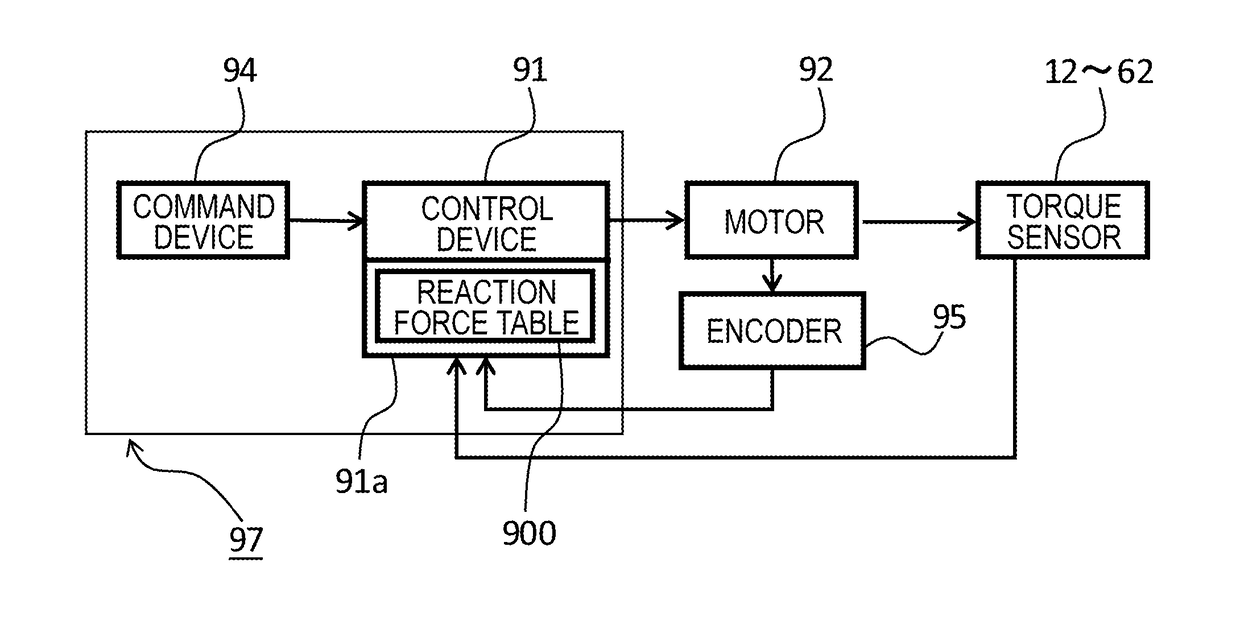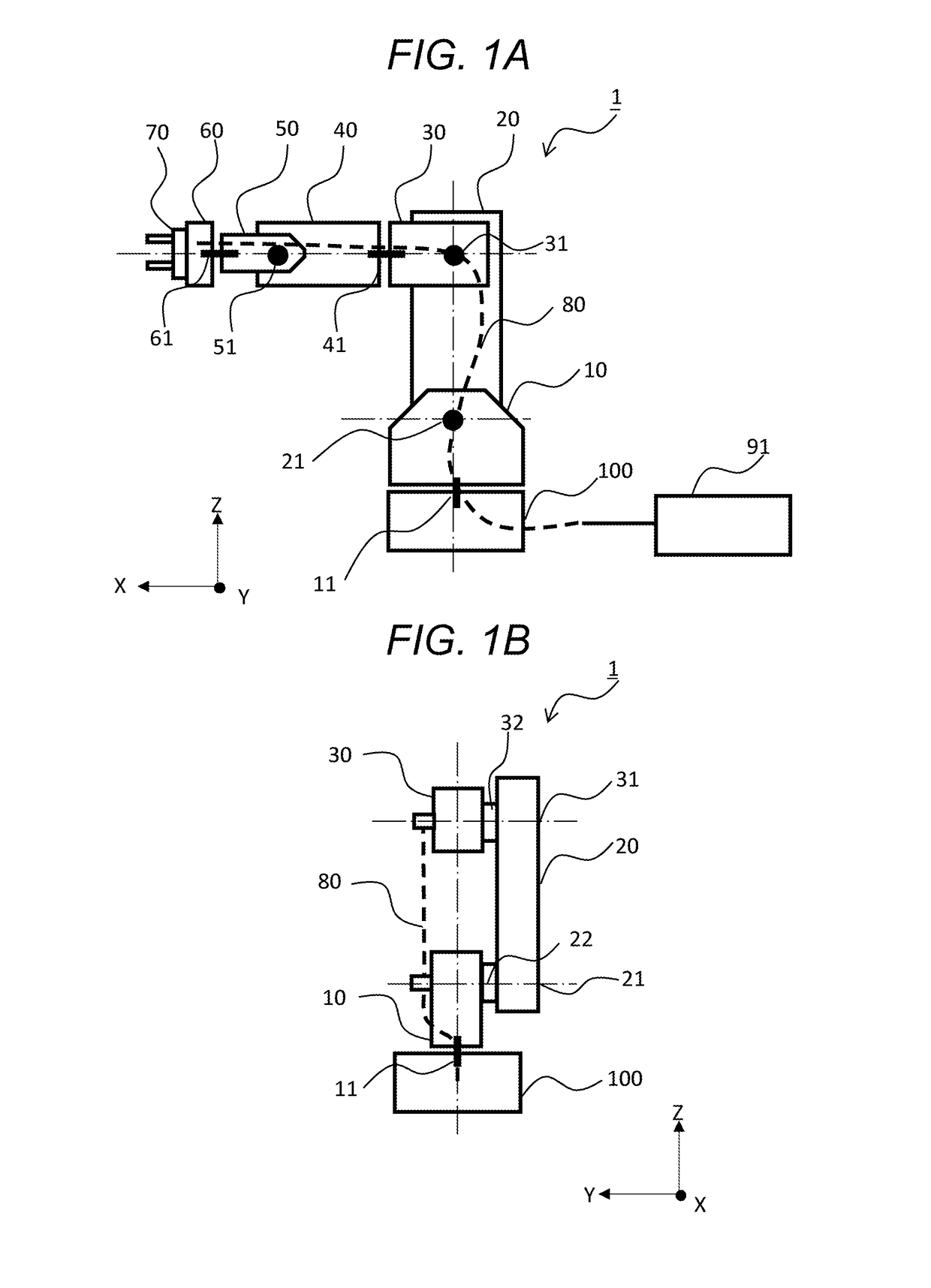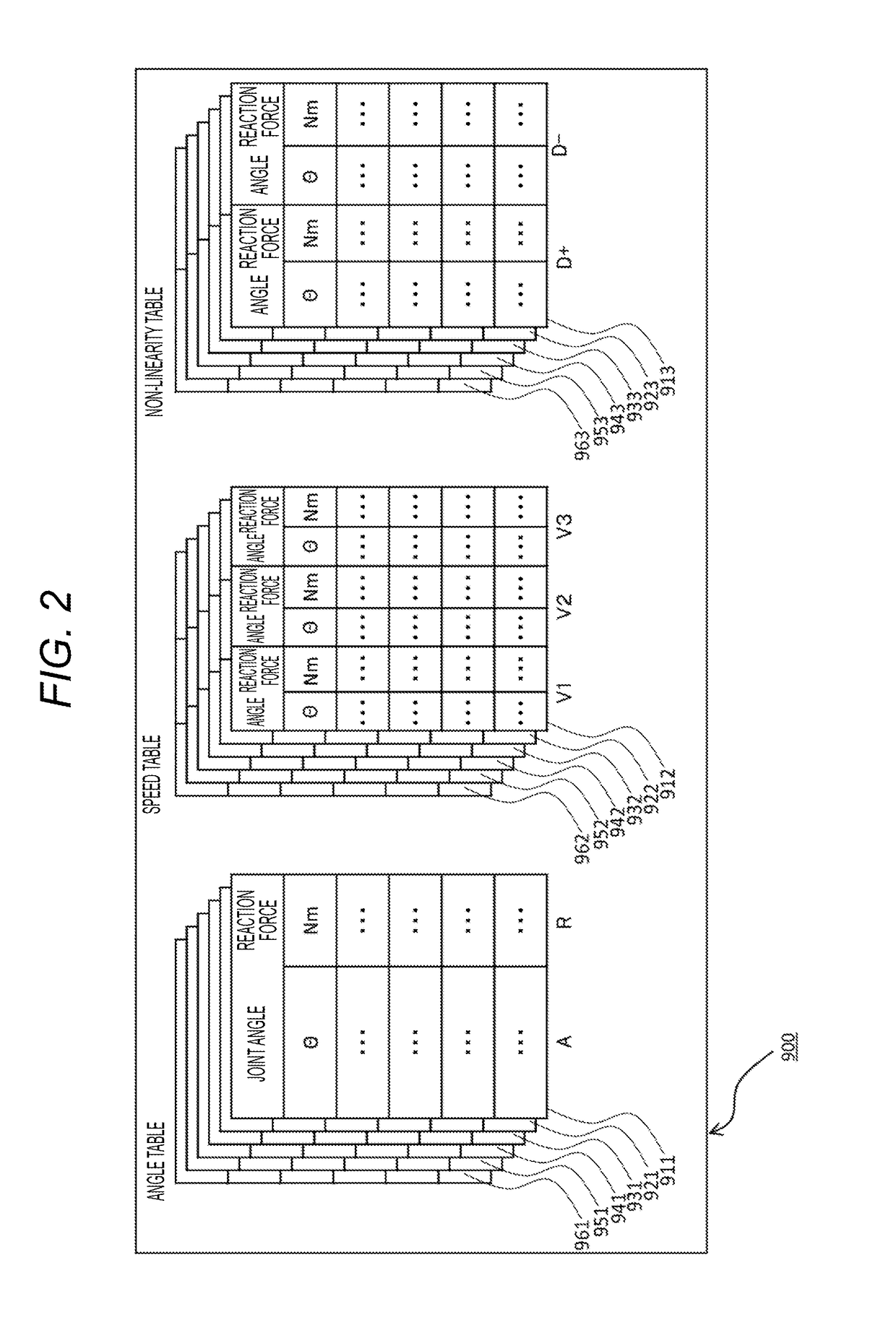Robot apparatus, control method of robot apparatus, and recording medium
a robot and control method technology, applied in the direction of programmed manipulators, programme control, instruments, etc., can solve the problems of not meeting the precision requirements, the robot apparatus is not frequently used, and the current articulated robot's precision of force (torque control is not achieved, so as to achieve precise force (torque control
- Summary
- Abstract
- Description
- Claims
- Application Information
AI Technical Summary
Benefits of technology
Problems solved by technology
Method used
Image
Examples
example 1
>
(Basic Configuration of Robot Apparatus)
[0035]FIGS. 1A and 1B show the whole configuration of an articulated robot apparatus as an example of a robot apparatus in which the present disclosure is employed. FIG. 1A shows the robot apparatus in this example seen from, for example, a side thereof. Axes of coordinates of a three-dimensional (XYZ) coordinate system used for controlling this robot apparatus are shown in a lower left part of FIG. 1A. As shown in FIG. 1A, among those axes of coordinates, the Z-axis is directed to an upper side of the drawing and the X-axis is directed to a left side of the drawing. FIG. 1B shows a robot arm 1 of the same robot apparatus seen from, for example, a back side thereof (right side in FIG. 1A). Axes of coordinates of a similar three-dimensional (XYZ) coordinate system are also shown in a lower right part of FIG. 1B. For example, a posture of the robot arm 1 shown in FIG. 1A is set as an initial posture.
[0036]As shown in FIG. 1A, the robot apparatu...
example 2
[0130]In this example, some examples of a robot control procedure (robot control program) executable in the CPU 601 of the above control device 91 will be exemplified. FIG. 5 and FIG. 6 show flows of the robot control procedure (robot control program) executable in the CPU 601 of the control device 91.
[0131]The control example in FIG. 5 is an example where a command value from the command device 94 for driving a rotary joint is corrected in accordance with cable reaction force shown in the reaction force table 900. Further, the control example in FIG. 6 is an example where torque control is performed by correcting output values of the torque sensors 12, 22, 32, 42, 52, and 62 of the respective rotary joints in accordance with the cable reaction force shown in the reaction force table 900. In order to facilitate understanding, control shown in FIG. 5 and FIG. 6 is simplified as control related to a single specified rotary joint. The control shown in FIG. 5 and FIG. 6 can be stored on...
PUM
 Login to View More
Login to View More Abstract
Description
Claims
Application Information
 Login to View More
Login to View More - R&D
- Intellectual Property
- Life Sciences
- Materials
- Tech Scout
- Unparalleled Data Quality
- Higher Quality Content
- 60% Fewer Hallucinations
Browse by: Latest US Patents, China's latest patents, Technical Efficacy Thesaurus, Application Domain, Technology Topic, Popular Technical Reports.
© 2025 PatSnap. All rights reserved.Legal|Privacy policy|Modern Slavery Act Transparency Statement|Sitemap|About US| Contact US: help@patsnap.com



